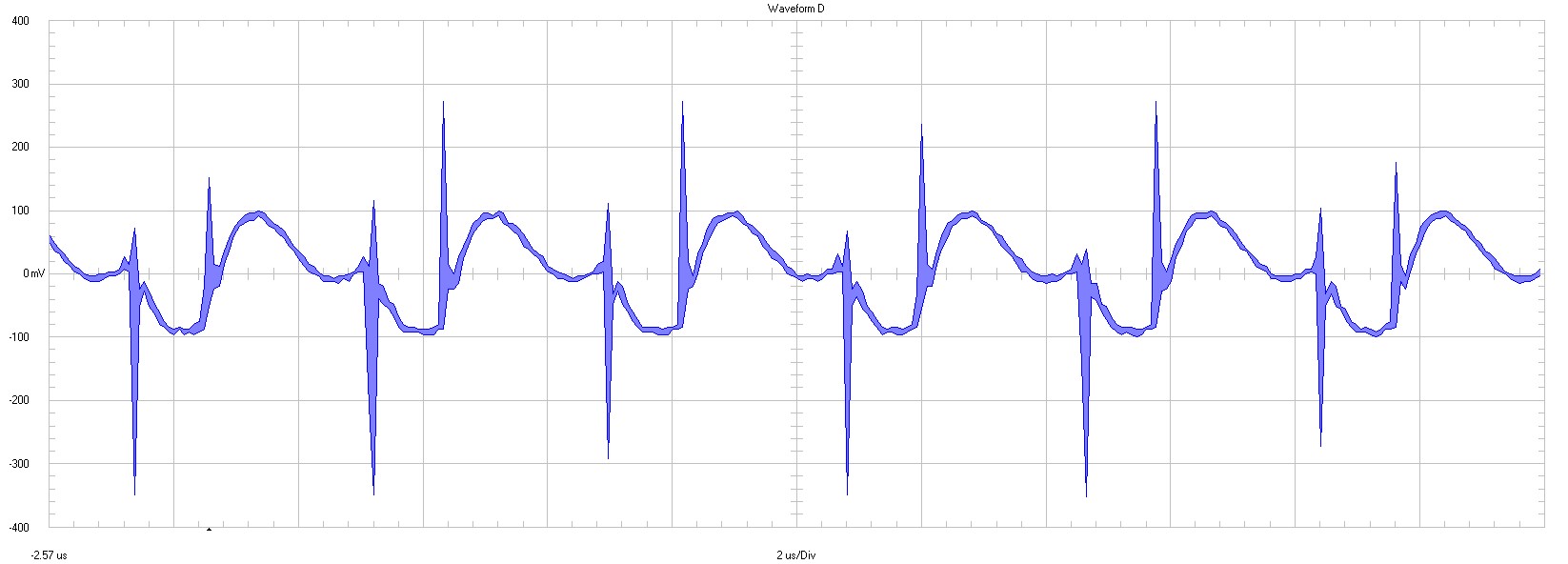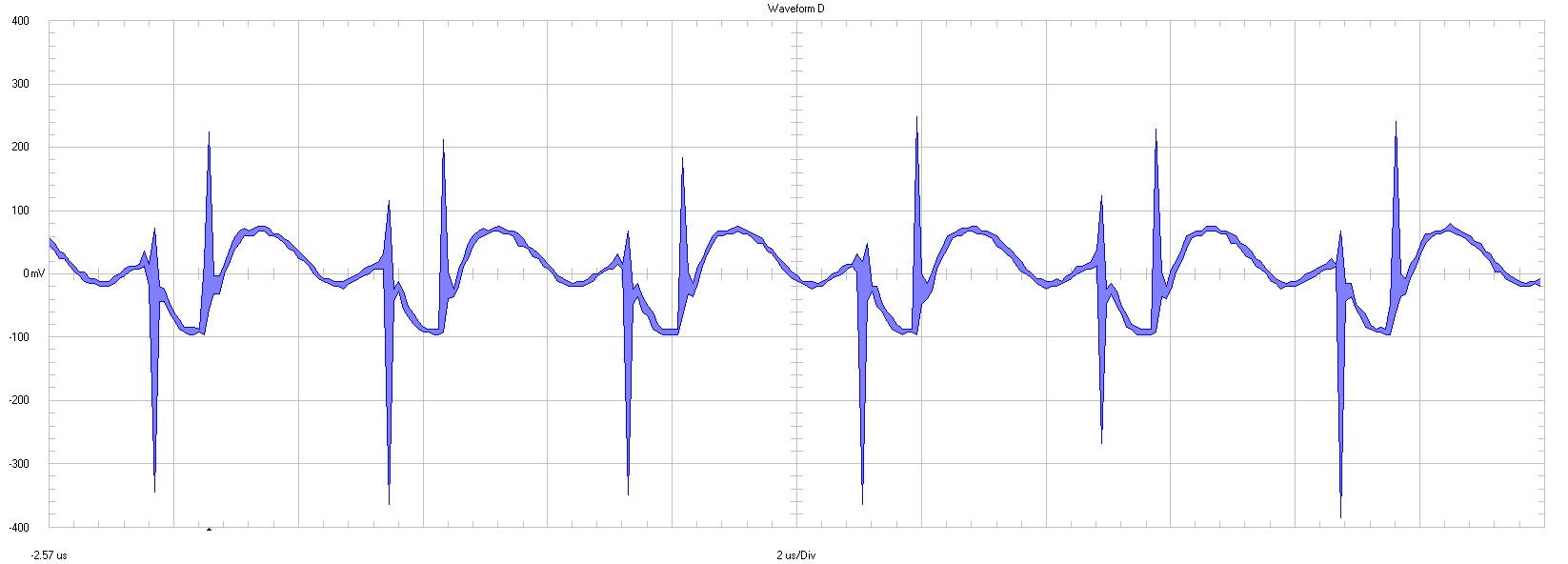TIDT261 March 2022
3.2 Output Voltage Ripple
Output voltage ripple (AC coupled) is shown in the following figures.

100 mV / div, 20-MHz bandwidth, 2-µs /
div
Figure 3-12 Output Voltage Ripple at 4
VIN
100 mV / div, 20-MHz bandwidth, 2-µs /
div
Figure 3-13 Output Voltage Ripple at
12-VIN
100 mV / div, 20-MHz bandwidth, 2-µs /
div
Figure 3-14 Output Voltage Ripple at
18-VIN